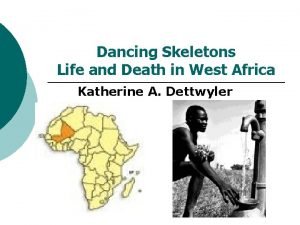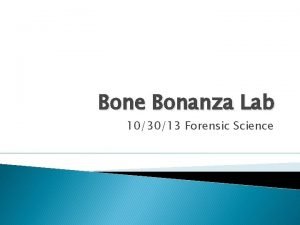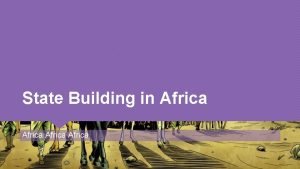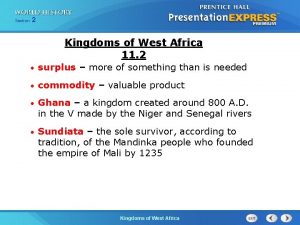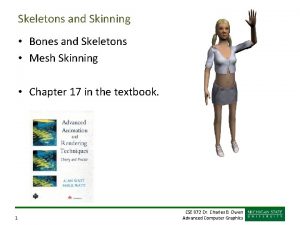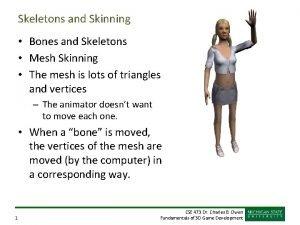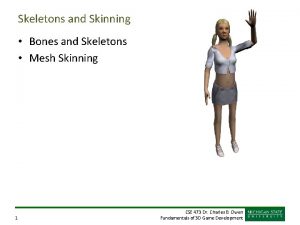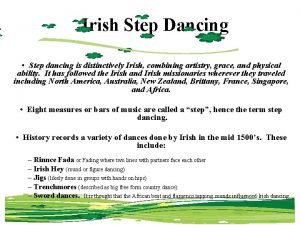Dancing Skeletons Life and Death in West Africa









- Slides: 9

Dancing Skeletons Life and Death in West Africa Katherine A. Dettwyler

http: //www. odci. gov/cia/publications/ factbook/geos/ml. html

http: //web. worldbank. org • vulnerable to drought & risks further desertification • one of the world's poorest countriesrated 174/177 in 2004, using the UNDP Human Development Index • In 2004, 64% of the population (12 million people) lived below poverty line • life expectancy was 52 years, infant mortality was 113 per 1, 000 live births, and the adult illiteracy rate was 55%

CULTURAL RELATIVISM (early 1900 s-1930 s) Franz Boas The Mind of Primitive Man (1911) WEB Du. Bois The Souls of Black Folk (1903) Margaret Mead Coming of Age in Samoa (1928) CULTURAL RELATIVISM: Behavior in one culture should not be judged by the standards of another culture ETHNOCENTRICISM: (opposite of relativism) Tendency to view one’s culture as superior and to apply one’s own cultural values in judging the behavior and beliefs of people raised in other cultures

Chapter 1: Return to the Field 1. What were Dettwyler’s main research questions during her dissertation research? During her Fulbright research? Why did she decide to return to Mali? 2. What is culture shock? How did Katherine experience culture shock when she returned to Mali? 3. Do you think it was ok for Katherine to intervene in the case of child #104, or should anthropologists attempt to stay out of the lives of the people with whom they study? Is it possible to conduct anthropological research without affecting people with whom you study?

Chapter 2: Of Mosquitoes and Men 1. Describe MAGNAMBOUGOU 2. How do the medical resources of Magnambougou compare to those available in the US? What are the main diseases children in Mali must contend with? 3. If malaria were still a major killer of people in Western, industrialized nations, do you think more resources would be devoted to research for its prevention and cure? Are there any differences between medical resources spent on diseases that primarily affect poor people and those that affect rich people?

Chapter 3 & 4: Practice Thinking From a Cultural Relativistic Perspective About the Following: • Sex and Sexuality • Beauty • Illness • Life/death

Chapter 5: The Grande Marche • What is a typical economic explanation for malnutrition in children? • Does this explanation help us understand malnutrition in Mali? Why or why not? • Economically speaking, how do markets in Mali operate?

Chapter 6: Rural Africa At Last • What is kwashiorkor according to Western biomedicine? According to rural Malian interpretations in N’tenkoni? • In what age range do we usually see kwashiorkor? Why is it rare in Mali? • Why was Moussa so ethnocentric about the rural people of his own country?
